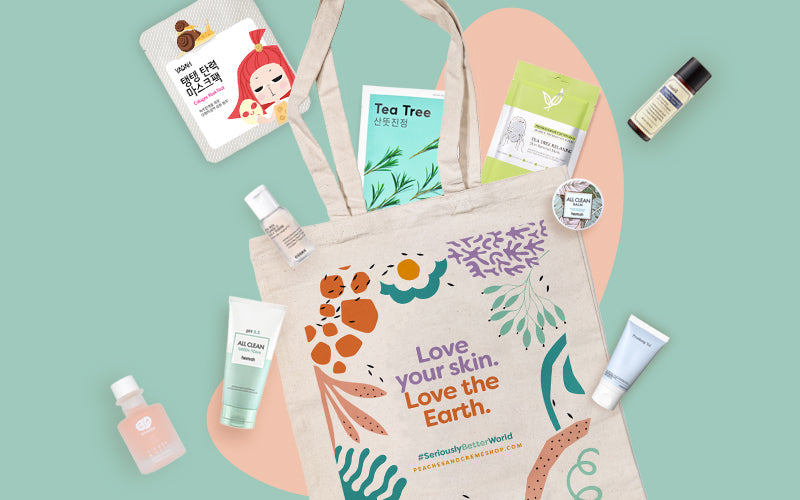What the Ingredients List Does NOT Tell You
Are you the type of shopper who will analyse each and every ingredient in your skincare product when deciding whether to purchase a product or not? Do you nitpick on each individual ingredient? Do you avoid the entire skincare product just because it contains an ingredient that seems to be irritating, problematic, or unsafe?
That's understandable - but humor us for a bit. Today, let's talk about the importance of the ingredients list (a.k.a. the INCI list), and why we ultimately cannot rely on the ingredients list alone when selecting a skincare product.
This has become a relevant and important topic in the beauty industry, particularly in skincare enthusiasts like us, and we would want to share some insights as fellow consumers and skincare lovers!
“Ingredients don’t lie - but ingredients lists do.”
This is what Annalisa, a cosmetic formulator from Skin Perspective, says on Instagram.
In this age when technology and the internet has given us better access to ingredient scanning platforms, us consumers are more empowered, more informed and educated, and have generally become more aware of the cosmetic products we use. This has also made the beauty world more transparent, too.
However, these online tools have oversimplified the complex formulation process and the chemistry behind creating every skincare product we use. Unfortunately, this has led to consumers categorising each ingredient as simply good or bad - and fearmongered certain ingredients without fully understanding the science behind it.
Just as you cannot judge a book with just a synopsis, you can't judge a skincare product solely by its ingredients list. This list, ultimately, tells only a part of the story. What it doesn't tell is also as important:
- How the product is formulated;
- How and where the ingredients were sourced, the kind and quality of the ingredients; and
- The overall product experience, the skin feel, and if it works for you.
But again, looking through the ingredients list, of course, has its uses. For instance:
- You're allergic or sensitive to a particular ingredient
- You're looking for a specific ingredient that you like/want/need for its benefits (especially if you've tried it before and it works for you!)
- You're comparing the ingredients list to the key ingredients of the rest of your skincare routine so you can expand and manage the amount of it you use
If you do any of these, then yes - that's how you use the ingredients list.
For Jen Novakovich, Formulation Chemist and Founder of Ecowell, looking through the ingredients works like preparing to make a recipe. “You can think about it if you are to bake a cake. How much vanilla, salt and sugar did you add? How did you mix the ingredients? How hot and for how long did you bake the cake? How and where did you apply the icing? All these things will make a big difference on how that cake tastes. The same logic applies to your cosmetics.”
Instead of fearmongering, understand the formulation
Just the ingredients list itself cannot tell you how these ingredients are formulated together in terms of dose, delivery, and all other details behind the formulation.
“Ingredients lists were first mandated in cosmetics to inform consumers about potential allergens. If you have a known sensitivity to the ingredients, this will make your life a bit easier," says Jen Novakovich of Ecowell. "Unfortunately, with all the chemophobia out there, the double edge sword of this list is that it became so easy and common to fearmonger individual ingredients."
She continues: "It is very normal to fear what you don’t understand. Ingredient lists that are the same may have two different formulas in a bottle. With respect to texture, performance, feel and so on. Formulation matters a lot more than the individual ingredient."
Ingredients like parabens, fragrance, SLS, and others may cause issues when used inappropriately, as with anything. But when sound formulation principles are followed, it is still possible to create very gentle products that will be tolerated by most people.
Take fragrances, for example. Using too high fragrance concentrations can cause irritation and allergies. But following guidance and utilising fragrances in appropriate concentrations can significantly reduce these risks.
"Ultimately, it rarely makes sense to look at the ingredients list unless you have a known sensitivity," says Novakovich. For instance, if you are vegan, you will have to look out for animal products. "But in most cases, formulation context is greater than the sum of its parts."
Dr. Anke Ginzburg, a cosmetic scientist and a PhD in Pharmaceutical Chemistry, adds: “A single ingredient does not tell you the formulation as a whole. An ingredient by itself can have a certain property. For example, (it can have) an irritating effect on the skin when used by itself. But in a formulation, combined with other ingredients, it can actually change its properties - and by that, add to the product without leaving the product with irritant properties."
Let's take for example SLS and SLES. These are sulfates that act as surfactants. Consumers look out for these ingredients and may automatically avoid products containing these, immediately dismissing them as harsh, dry, or irritating. What many don't know is that SLS and SLES can be combined with a secondary surfactant and formulated in a way that they can be used even for sensitive skin. Unless you are aware of what secondary surfactants are and how to find it in that ingredients list, simply looking for SLS and SLES isn't enough to determine the overall quality or effect of the resulting product.
Another example and probably one of the most fearmongered ingredient is Denatured Alcohol. This ingredient has a bad rep because it can strip the skin and be very drying when used by itself. Because of this, a lot of people shy away immediately when they see this in the ingredients list. But there are serums and and toners that contain denatured alcohol that are actually very hydrating to the skin.
Coconut oil is another ingredient with a bad rep. Raw coconut oil is a pore-clogging (comedogenic) ingredient, but a product containing coconut oil isn't necessarily comedogenic and clog your pores. Again, it depends on how the product is formulated.
Ingredients may have the same name - but have different effects
The same key ingredient that appears in the ingredients list of various products does not necessarily offer the same benefits, skincare properties, or product experience.
Confusing? To illustrate, Liah Yoo, founder of Krave Beauty, shows us how Green Tea (Camella Sinensis) Leaf Extract is used by the same parent company in three different brands. Each brand has a different formulation and sources the ingredient in different ways.
- Brand 1 uses green tea sourced from the Jeju Dolsongi Tea Garden. The tea leaves goes through 50 days of fermentation in nature. After fermentation, the green tea is transferred to traditional Jeju earthenware and aged for another 50 days in nature.
- Brand 2 uses green tea sourced from a farm in Jeju Island in Korea. They use a compound of green tea leaves called Beauty Green Tea, selected from 3,100 varieties. Rich in 16 hydrating amino acids, the organic leaves are plucked from the stem and dimmed for 36 seconds to retain nutrients, and pressed. The extracted essence is stabilised for freshness and purified for safe application to the skin. They then double squeeze the moisture from the leaves instead of performing the classic infusion in order to best capture their skincare benefits.
- Brand 3 calls their green tea "White Leaf Tea." They created an environment where they can control the UV exposure of the green tea leaves. The result is tea leaves that have more amino acids than regular green tea.
From this example, we can see that not all green tea extracts are sourced or processed in the same way, even if they are all listed as "green tea." This shows that not all ingredients used in every product are created equal - and just because ingredients are labeled the same in the ingredients list, doesn't mean that we can easily assume that they will have the same effect.
So how can you tell if a product is good for you or not?
Beyond the ingredients list, it takes use and actual experience to ultimately judge any product and determine if it's good on your skin or not.
The importance of checking the ingredients list can never be discounted or disregarded, most especially if you are sensitive or allergic to particular ingredients. However, it is still important to remember that the ingredients list will not tell you what the product experience will be for you. Trust your experience. Trust how the product feels on your skin. Trying the product for yourself is the only sure way to tell if the product works for you, and if you will enjoy using it.
What about product reviews?
Do note that while it is helpful to check other customers’ reviews and their experience on a particular skincare product, it is still important to remember that your skin is unique. Even if your friend has the same skin type as yours, your experiences on the same product will still probably be different, and that's completely normal!
References
- Annalisa from Skin Perspective: https://www.instagram.com/p/CGCsbr2Hheg/
- Liah Yoo of Krave Beauty: https://www.youtube.com/watch?v=JzOUsZ8IbhU&t=393s&ab_channel=LiahYoo









Leave a comment